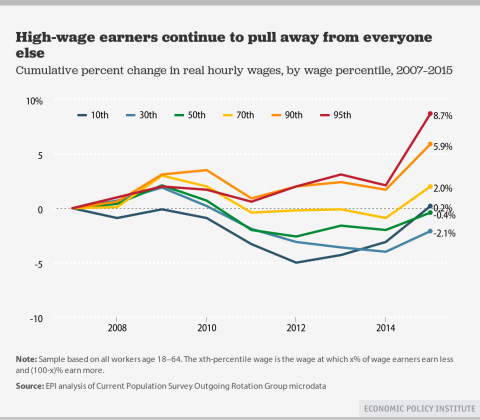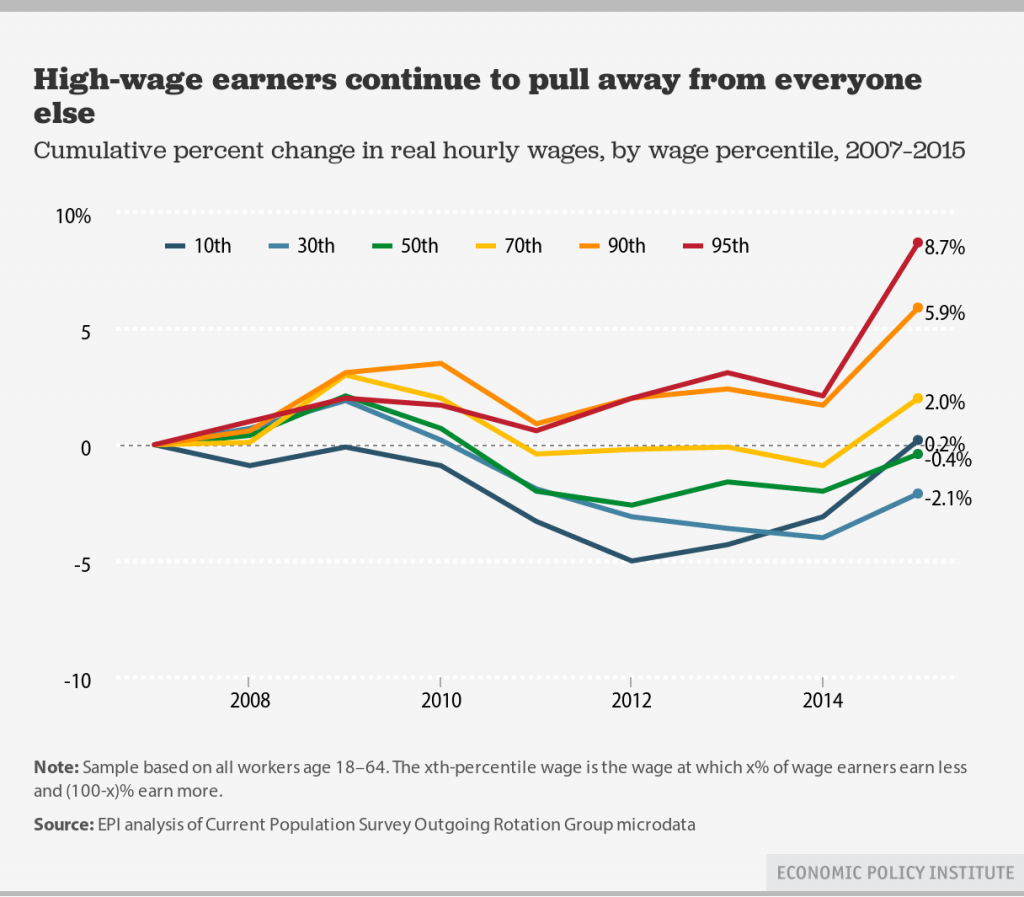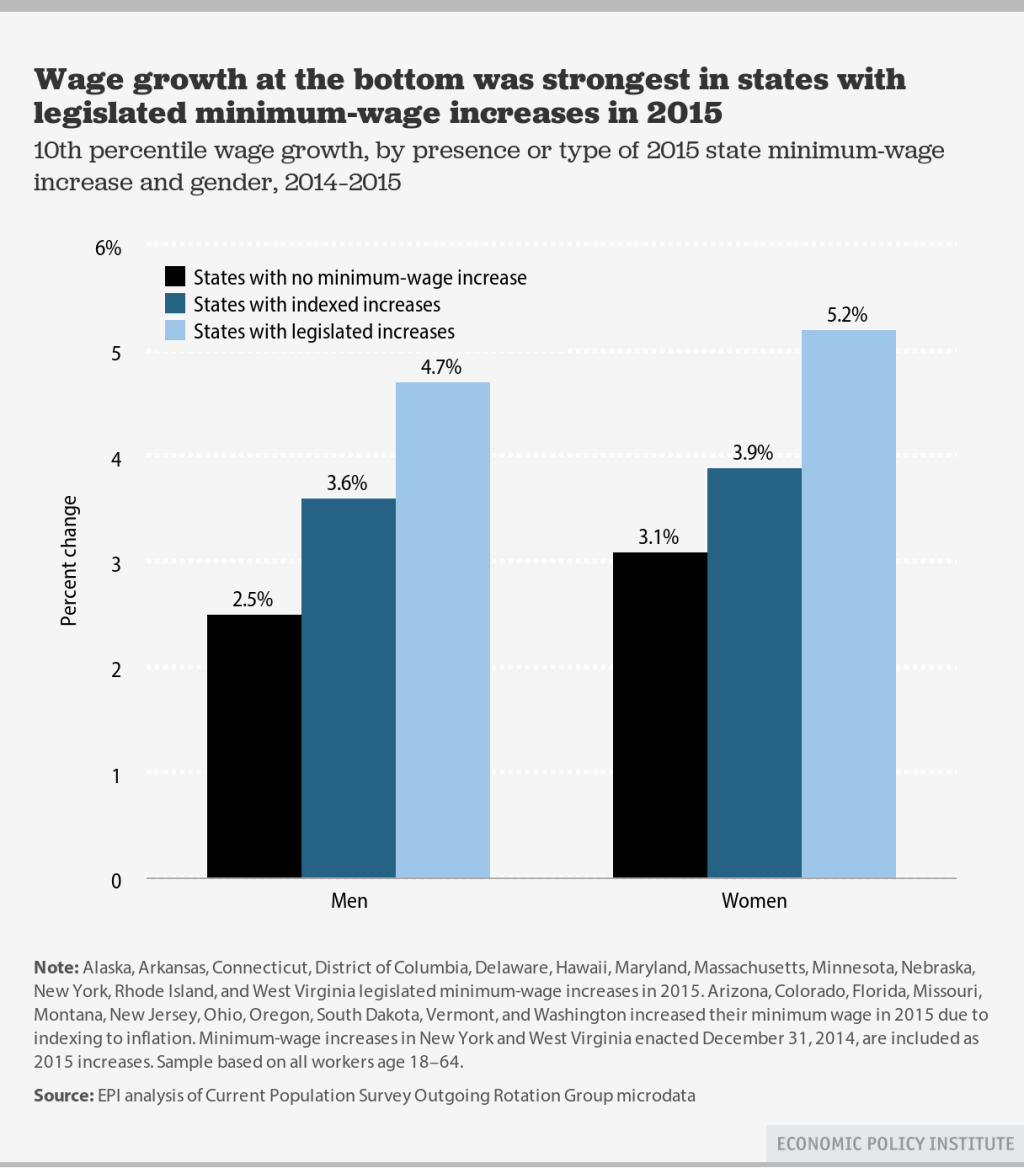
Wage Inequality Grew in 2015 - for the 35th Year in a Row
A new report confirms what many Americans feel every day: the wage gap between the top and everyone else continues to grow. The good news is that real hourly wages (or, in non-economist speak, wages adjusted for inflation) grew across the board in 2015. However, the folks at the Economic Policy Institute found that wage growth was largest for top wage earners, meaning that wage inequality grew for the 35th year in a row.
As the EPI’s graph below shows, the wage gap between folks in the lower wage groups and those in the middle has remained pretty stable (the report says since about 2000). But the gap between the folks at the top and everyone else continues to grow. The report found that overall wages grew by 2.2 percent from 2014 to 2015, but wages for those in the top 5 percent grew by nearly 3 times that – 6.4 percent. For men in the top 5 percent, the wage growth was even higher at almost 10 percent.
According to EPI, wage inequality has risen since the late 1970s in part because of policies that have let the value of the minimum wage fall and eroded workers’ rights to collectively bargain. To this first point, the report shows that wage growth at the bottom of the wage scale was faster in states that increased their minimum wage. Twenty–three states and DC saw increases to their minimum wage in 2015, either through legislation or through automatic increases because those states’ minimum wage is indexed to inflation. As the EPI figure below shows, low-wage workers in states that didn’t increase their minimum wage saw a lower wage growth than workers in other states. This shows how strong labor standards in general and a stronger minimum wage in particular can improve circumstances for low-wage workers and help reduce inequity.
As our economy continues to recover from the Great Recession, too many low-income Americans are still being left behind. To ensure that a rising tide really does lift all boats, we need to raise the minimum wage and expand overtime protections for low- and middle-income earners. The latter, which would benefit 13.5 million workers, became closer to reality earlier this month when the Department of Labor moved its proposed changes to the overtime rule to the next step towards final approval.
To take action, use this tool from the National Partnership for Women and Families to tweet at your members of Congress and urge them to support the #RaiseTheWage Act, and follow developments on raisetheminimumwage.com. You can also take action through the MomsRising site to urge your members of Congress to support the Paycheck Fairness Act to eliminate the gender wage gap. Finally, follow developments on the overtime rule by using the hashtag #FixOvertime and visiting fixovertime.org.
This post was originally published on the Coalition on Human Needs' blog, Voices for Human Needs. Receive similar articles in your inbox by subscribing today, and follow CHN on Facebook and Twitter.




The views and opinions expressed in this post are those of the author(s) and do not necessarily reflect those of MomsRising.org.
MomsRising.org strongly encourages our readers to post comments in response to blog posts. We value diversity of opinions and perspectives. Our goals for this space are to be educational, thought-provoking, and respectful. So we actively moderate comments and we reserve the right to edit or remove comments that undermine these goals. Thanks!